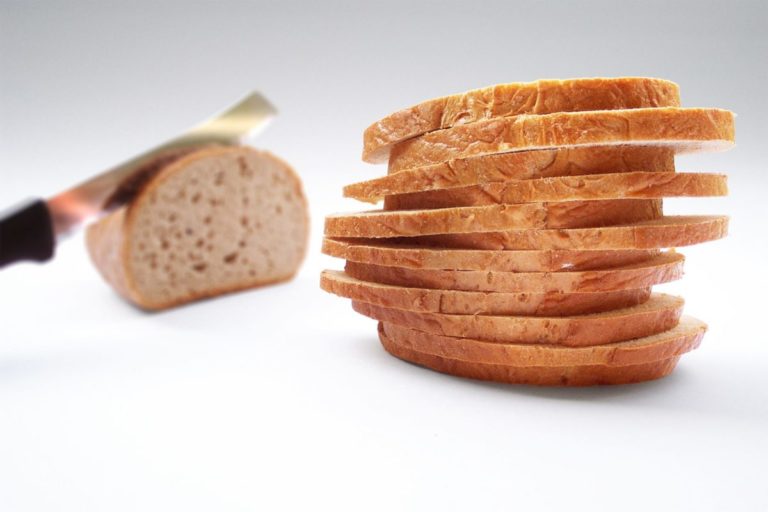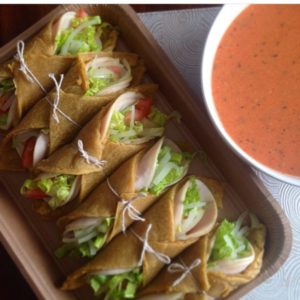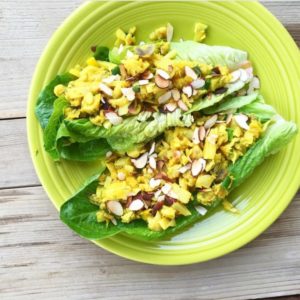
Going grain-free can be a great way to switch your focus on a more un-processed whole foods approach as well as be extremely beneficial for those battling chronic inflammation and health symptoms.
Grains can be inflammatory to many, even if you do not feel a large reaction to gluten. Gluten is only one tiny component of what can cause problems.
Grains also contain other inflammatory proteins, called lectins, as well as the majority of them being GMO and sprayed by pesticides, herbicides and other toxic chemicals. This can lead to what is known as "leaky gut," when you get a breakdown of your gut lining and immunity. When this happens you are more prone to developing food sensitivities, gut dysbiosis, infections, and auto-immunity.
Grains can be a common trigger to those with autoimmunity from conditions like Rheumotoid arthritis to Celiac to Endometriosis (yep, Endo is now being thought to have an auto-immune reaction involved.) This means that when you eat grains you can confuse it with an invader and start attacking the grain, this can cascade into your body starting to attack its own tissues because many of these compounds can look surprisingly similar.
You don't need grains to get your vital nutrients, many grains can actually hinder your body's ability to absorb nutrients. That is because they contain phytic acid, also known as anti-nutrients, which can hurt your ability to absorb minerals. All the vitamins, minerals, protein, and fiber can be found in much higher quantities from other sources.
Going grain-free has made a tremendous difference in my own health. Give your nutrition and health a boost and try incorporating a few grain-free recipes into your regular routine!
It may seem overwhelming at first, but once you get the hang of a few recipes and realize that you have SO many other options, you will fall into a delicious groove.
1) Plantains
 This whole post could be dedicated to plantains actually. They are an incredibly versatile vegetable.
This whole post could be dedicated to plantains actually. They are an incredibly versatile vegetable.
When green and unripe they are perfect for making flour, flatbreads, crackers, pancakes and other baked treats. They are high in starch at this point so they can act as a "glue" in your baking. They can help bind salmon cakes, or veggie tots together. You can make plantain rice or even waffles, or classic tostones.. the possibilities are endless.
When they become yellow and ripe they are much more sweet. The starch has turned to sugar, so although they may not have the same binding capabilities they can still be used in many ways. I love to just fry them in coconut oil, you can also make a puree or use in soft brownies or cookies.
To get you started in the world of plantains, try my plantain granola recipe in this free download.
2) Coconut
Coconut is another favorite of mine. Easy for most people to digest and functional in many ways.
You can use coconut flour in combination for many different baked treats. It is rich and absorbs moisture easily, so it can add a great airiness and sweet flavor to the end product. Coconut flour is very low in sugar and carbohydrates compared to many other flours, both grain-free and regular. So it can be especially useful for those that are working to heal from insulin resistance but still would like a treat once in awhile.
As a flour, it is more a simple sweet flavor than very coconut-y. You can use it to thicken smoothies, puddings or even soups. Be aware though that a little can go a long way due to it's moisture absorbing capabilities. And when working with recipes you don't want to stray far from what has proven to work because with coconut flour there is a definite happy medium.
Shredded, coconut can play a wonderful role as a replacement to oatmeal or in breakfast porridge like this recipe. It provides sweetness, fiber, and healthy fats to trail mix, granola bars, or simply on it's own.
Now they even have wraps made out of coconut! Try these in place of your next crepe or pb & j.
3) Root Veggies
I love Chips.
There I said it, but since I am grain-free, which includes pseudo-grains like corn and quinoa, I choose other options for my treat.
Root veggies are great at this. Sweet potato chips are my favorite, but now there is an explosion of grain-free options out there, from beet chips, plantain chips, carrot chips, cassava chips, coconut flour chips, bean and lentil chips, and the plain ol' potato chip that can help you be grain-free.
Root vegetables are a wonderful substitute for grains because they can still fill that starchy, carb category you may be looking for but they are also much higher in nutrients, antioxidants, and typically lower in calories and sugar.
Investing in a spiralizer or grater can allow you to make sweet potato, winter or summer squash, or even carrot noodles. You can have "pasta" and serve the same way you would with a sauce.
I even love grilling sweet potato slices with my hamburger to stack and serve as a "bun."
Get creative and try a variety of vegetables in place of your grains and see how it can really boost the flavor of the dish!
4) Nuts/Seeds
Almond flour is widely known now so I won't go too far into why it is amazing to bake with if you are okay with nuts.
So don't stop there, there are many other nut and seed flours that are just as amazing. If you can't find it online, it is simple to make your own flour in your high-powered blender or coffee grinder. Experiment with sunflower flour, pumpkin flour, hazelnut flour, walnut flour, or cashew flour. Just be careful not to over grind and turn it into a butter 😉
By using nuts and seeds you add fiber, healthy fats, protein, and a delicious flavor to your baked goods. Many of these can be used easily in place of any recipe that calls for Almond Flour.
Tigernut flour is also a favorite of mine, although these are technically little tuber vegetables, so although they are called a "nut" they are not and are perfectly safe for those that are allergic to nuts or seeds.
5) Lettuce Greens
 A lot of times when people eat grains it comes from sandwiches, wraps, buns, or tortillas. These are some of the simplest things to replace.
A lot of times when people eat grains it comes from sandwiches, wraps, buns, or tortillas. These are some of the simplest things to replace.
Lettuce leaves are an easy alternative for buns and sandwiches, you can get large leaves like the buttercup, collard or romaine variety. Simply use all the same fillings but stack in a large lettuce leaf. You can use the leaves raw, or with hardier versions like kale, collard and chard, you can steam first to soften (this is great to use in enchiladas!).
Don't dismiss what can become a salad. Instead of wrapping your burrito in a tortilla, through your fillings on a bed of lettuce. When you add your sandwich or wrap fillings on a bed of lettuce you automatically increase your fiber and nutrient intake as well as satiety.. meaning you will likely eat a bit less and still feel full even longer!